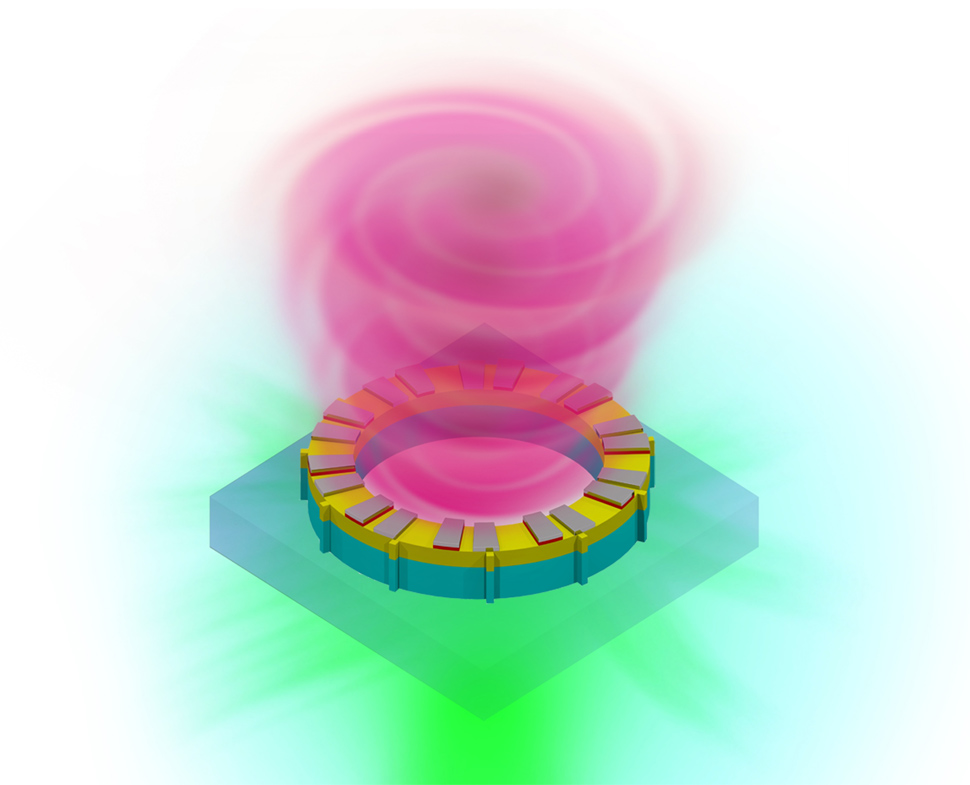
30th July 2016 Vortex laser offers hope for Moore's Law A new laser that travels in a corkscrew pattern is shown to carry ten times or more the information of conventional lasers, potentially offering a way to extend Moore's Law.
Like a whirlpool, a new light-based communication tool carries data in swift, circular motions. This optics advancement could become a central component of the next generation of computers designed to handle society's growing demand for information sharing. It may also help to ease concerns for those worried about the predicted end of Moore's Law – the idea that researchers will find new ways to make computers ever smaller, faster and cheaper. "To transfer more data while using less energy, we need to rethink what's inside these machines," says Liang Feng, PhD, assistant professor in the Department of Electrical Engineering at the University at Buffalo's (UB) School of Engineering and Applied Sciences. For decades, researchers have been able to cram exponentially increasing numbers of components onto silicon-based chips. Their success explains why a typical handheld smartphone has more computing power than the world's most powerful computers of the 1980s, which cost millions in today's dollars and were the size of a large filing cabinet. But researchers are approaching a bottleneck, in which existing technology may no longer meet society's demand for data. Predictions vary, but many suggest this could happen within the next five years. This problem is being addressed in numerous ways, including optical communications, which use light to carry information. Examples of optical communications vary from old lighthouses to modern fibre optic cables used to watch television and browse the web. Lasers are a key part of today's optical communication systems and researchers have been manipulating them in various ways, most commonly by funnelling different signals into one path, to pack more information together. But these techniques are also reaching their limits.
The UB-led research team is pushing laser technology forward using another light control method, known as orbital angular momentum. This distributes the laser in a corkscrew pattern with a vortex at the centre, as pictured above. Usually too large to work on today's computers, they were able to shrink the vortex laser to the point where it is compatible with modern chips. Because the laser beam travels in a corkscrew pattern, encoding information into different vortex twists, it can deliver at least 10 times the information of conventional lasers, which move linearly. However, the vortex laser is just one component of many – such as advanced transmitters and receivers – which will ultimately be needed to continue building more powerful computers and data centres in the future. The study was published yesterday in the peer-reviewed journal Science. The research was supported with grants from the U.S. Army Research Office, the U.S. Department of Energy and National Science Foundation. ---
Comments »
|








